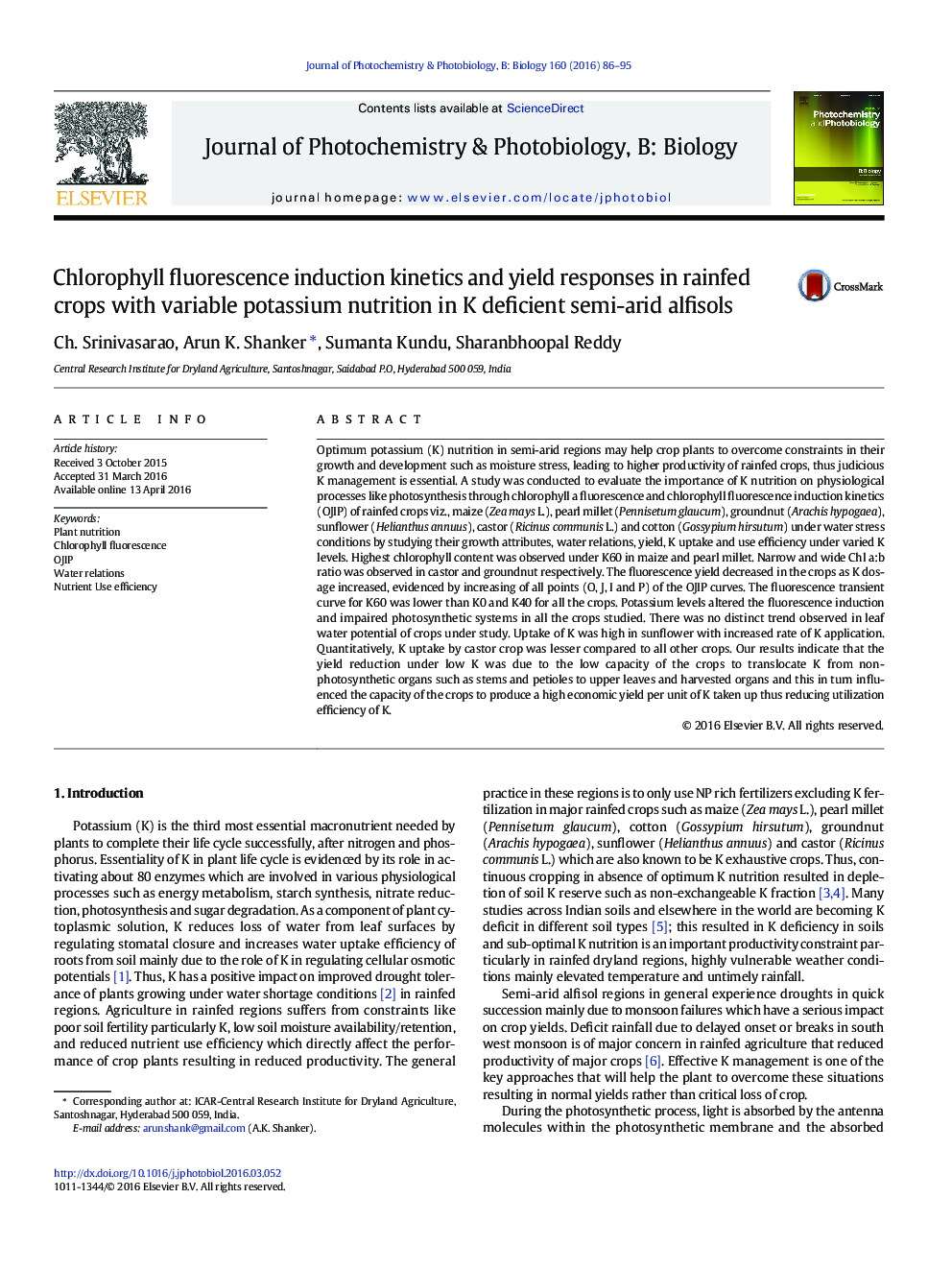| کد مقاله | کد نشریه | سال انتشار | مقاله انگلیسی | نسخه تمام متن |
|---|---|---|---|---|
| 29568 | 44422 | 2016 | 10 صفحه PDF | دانلود رایگان |
• Effect of K nutrition on Chlorophyll fluorescence of rainfed crops was studied.
• The fluorescence yield decreased as K dosage increased.
• K levels altered the fluorescence induction and impaired photosynthetic systems.
• K uptake by castor crop was lesser compared to all other crops.
• Sunflower was K exhaustive.
Optimum potassium (K) nutrition in semi-arid regions may help crop plants to overcome constraints in their growth and development such as moisture stress, leading to higher productivity of rainfed crops, thus judicious K management is essential. A study was conducted to evaluate the importance of K nutrition on physiological processes like photosynthesis through chlorophyll a fluorescence and chlorophyll fluorescence induction kinetics (OJIP) of rainfed crops viz., maize (Zea mays L.), pearl millet (Pennisetum glaucum), groundnut (Arachis hypogaea), sunflower (Helianthus annuus), castor (Ricinus communis L.) and cotton (Gossypium hirsutum) under water stress conditions by studying their growth attributes, water relations, yield, K uptake and use efficiency under varied K levels. Highest chlorophyll content was observed under K60 in maize and pearl millet. Narrow and wide Chl a:b ratio was observed in castor and groundnut respectively. The fluorescence yield decreased in the crops as K dosage increased, evidenced by increasing of all points (O, J, I and P) of the OJIP curves. The fluorescence transient curve for K60 was lower than K0 and K40 for all the crops. Potassium levels altered the fluorescence induction and impaired photosynthetic systems in all the crops studied. There was no distinct trend observed in leaf water potential of crops under study. Uptake of K was high in sunflower with increased rate of K application. Quantitatively, K uptake by castor crop was lesser compared to all other crops. Our results indicate that the yield reduction under low K was due to the low capacity of the crops to translocate K from non-photosynthetic organs such as stems and petioles to upper leaves and harvested organs and this in turn influenced the capacity of the crops to produce a high economic yield per unit of K taken up thus reducing utilization efficiency of K.
Journal: Journal of Photochemistry and Photobiology B: Biology - Volume 160, July 2016, Pages 86–95
